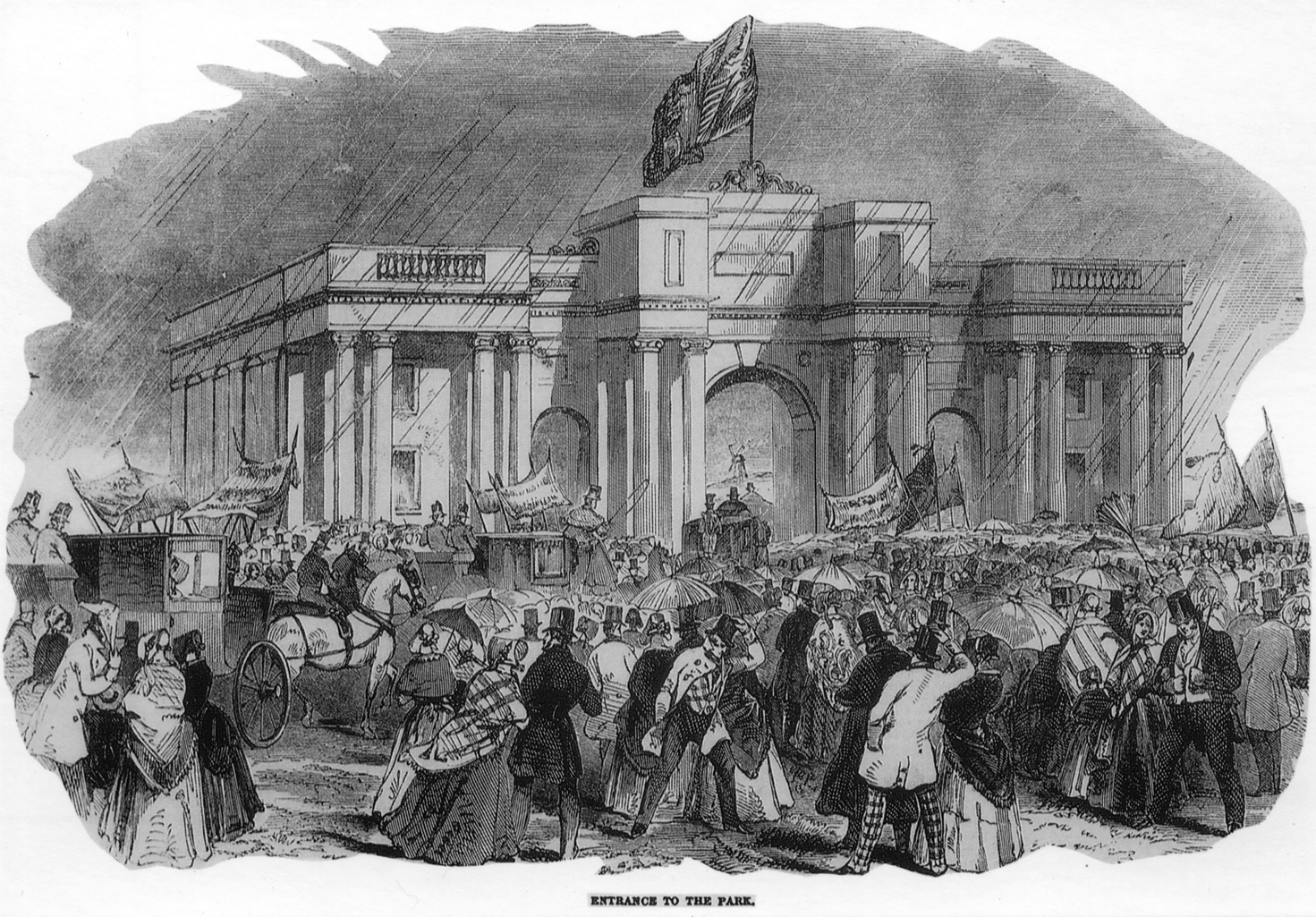Birkenhead Park’s Conception and Opening
Birkenhead Park has a rich and colourful history since its opening on Monday 5th April 1847. Seen as the forerunner of the Parks movement, Birkenhead Park has acted as the inspiration and template for countless other urban parks across the UK, Europe and North America. Since its opening, it the park has supported its local community through two global conflicts, played host to countless sports events with teams from across the World, all whilst maintaining its beautiful architecture and wondrous landscape.
Birkenhead Park will forever be the people’s park.

Conception and Opening
In the early – mid 19th century leading local industrialists, William Jackson, Macgregor Laird and Thomas Brassey, had a vision of building a ‘City of the Future’ on the Mersey, opposite the thriving city of Liverpool, which saw the town of Birkenhead experience a huge population increase (from 200 in 1821 to more than 24,000 in 1851). In 1840, the select committee on the Health of Towns declared preventative measures were required for reasons of humanity and justice to the poor, over conditions arising from the rapid expansion of urban populations. In 1841, Isaac Holmes – Liverpool Councillor and Birkenhead Improvement Commissioner – suggested that Birkenhead should have a public park.
In 1843 Act of Parliament gave the Birkenhead Improvement Commissioners authority to borrow money for the purchase of land to create a public park. Several important merchant and businessmen had been buying areas of land in and around Birkenhead. This land consisted of former farmland, mainly arable fields and former pastures, ill-drained meadows and commons, and was re-sold to the commissioners of the Park.
The chairman of the Birkenhead Improvement Commissioners invited Joseph Paxton, head gardener at Chatsworth to design the park, to which he agreed for a fee of £800. The plan for Birkenhead Park incorporated a park bounded by a carriage drive and areas around the edge of the park were set aside for the construction of villas in order to recoup the cost of paying for the park.
At Paxton’s behest, Edward Kemp supervised the development of the park and was appointed Park superintendent. As a close associated of Paxton’s, Kemp maintained and enriched the character of the landscape within the idiom described by Paxton. Kemp remained as superintendent of the park for forty years.
Birkenhead Park was officially opened on Monday 5th April 1847 by Lord Morpeth to a crowd of 10,000 people at the Grand Entrance. Despite having been completed almost 6 months earlier, the park’s opening was delayed in order to coincide with the opening of the Morpeth Dock complex in Birkenhead. Since then, Birkenhead Park has remained largely unchanged. Its originality and integrity remain intact, whilst it continues to modernise to suit the ever-changing needs and requirements of its visitors.
Olmsted 200: Parks for All People: Unites 120+ Organizations To Advocate for American Parks and Open Space, Marking Bicentennial of Frederick Law Olmsted’s Birth
Nationwide Events, Concerts, Celebrations, and Advocacy Campaigns Will Unfold Across America in 2022
WASHINGTON (January 20, 2022)—April 26, 2022, marks 200 years since the birth of American landscape architect and social reformer Frederick Law Olmsted, who championed the idea of public parks in the United States. In response, more than 120 organizations nationwide have banded together as “Olmsted 200: Parks for All People” for a year of public programming and events designed to celebrate, strengthen and expand parks, open space and American quality of life.
“‘Parks for all people,’ is the theme for hundreds of events across America this year as we celebrate the joy that parks and open spaces bring to our lives,” said Anne Neal Petri, CEO of National Association for Olmsted Parks, which is managing the Olmsted 200 campaign.
“Frederick Law Olmsted birthed the notion of public urban parks, and he created places that bring people together across their differences. These are bold ideas that transformed American life—and Olmsted 200 is devoted to keeping our parks vibrant and ensuring that every American has fair and ready access to parks.”
Events, concerts, tours, and talks are planned in Olmsted landscapes throughout 2022.
Olmsted famously worked on New York’s Central Park and Prospect Park; the U.S. Capitol Grounds; Boston’s Emerald Necklace; Atlanta’s Druid Hills; and numerous parks and landscapes in Chicago, Milwaukee, Buffalo, N.Y., Louisville, Ky., Connecticut, North Carolina, New Jersey, and beyond. He helped design the campuses of Stanford University; University of California, Berkeley; Trinity College; and many other schools and institutions.
Olmsted’s work laid the philosophical foundation for the later creation of America’s national and state park systems, and thousands of local parks.
“Frederick Law Olmsted proffered the idea that landscape architecture could create places that bolster the project of American democracy,” said Sara Zewde, founder of Studio Zewde and Assistant Professor of Practice at Harvard University’s Graduate School of Design.
“As we look at American life today, we see great need and opportunity to build on these original aims of landscape architecture. That’s what Olmsted 200 is all about.”
“Parks are vital contributors to our physical and mental health,” said Georges C. Benjamin, M.D., executive director of the American Public Health Association, an Olmsted 200 founding partner. “This year, let’s commit to park access for every American as part of a bold vision for public health.”
Birkenhead Park’s Manager, and one of our Forest School Practitioner were cordially invited to be part of a ceremony honouring Doug Blonsky in New York City on May 2nd.
Doug is the President and CEO of the Central Park Conservatory, the non-profit group responsible for maintaining the park daily and which also raises 75% of the park’s annual budget.
The 36th annual Frederick Law Olmsted Gala paid tribute to Doug Blonsky who gave 33 years with the group that rescued the park from decades of neglect. Doug has also visited Birkenhead Park on several occasions, recognising that without Birkenhead Park, there would be no New York Park.

